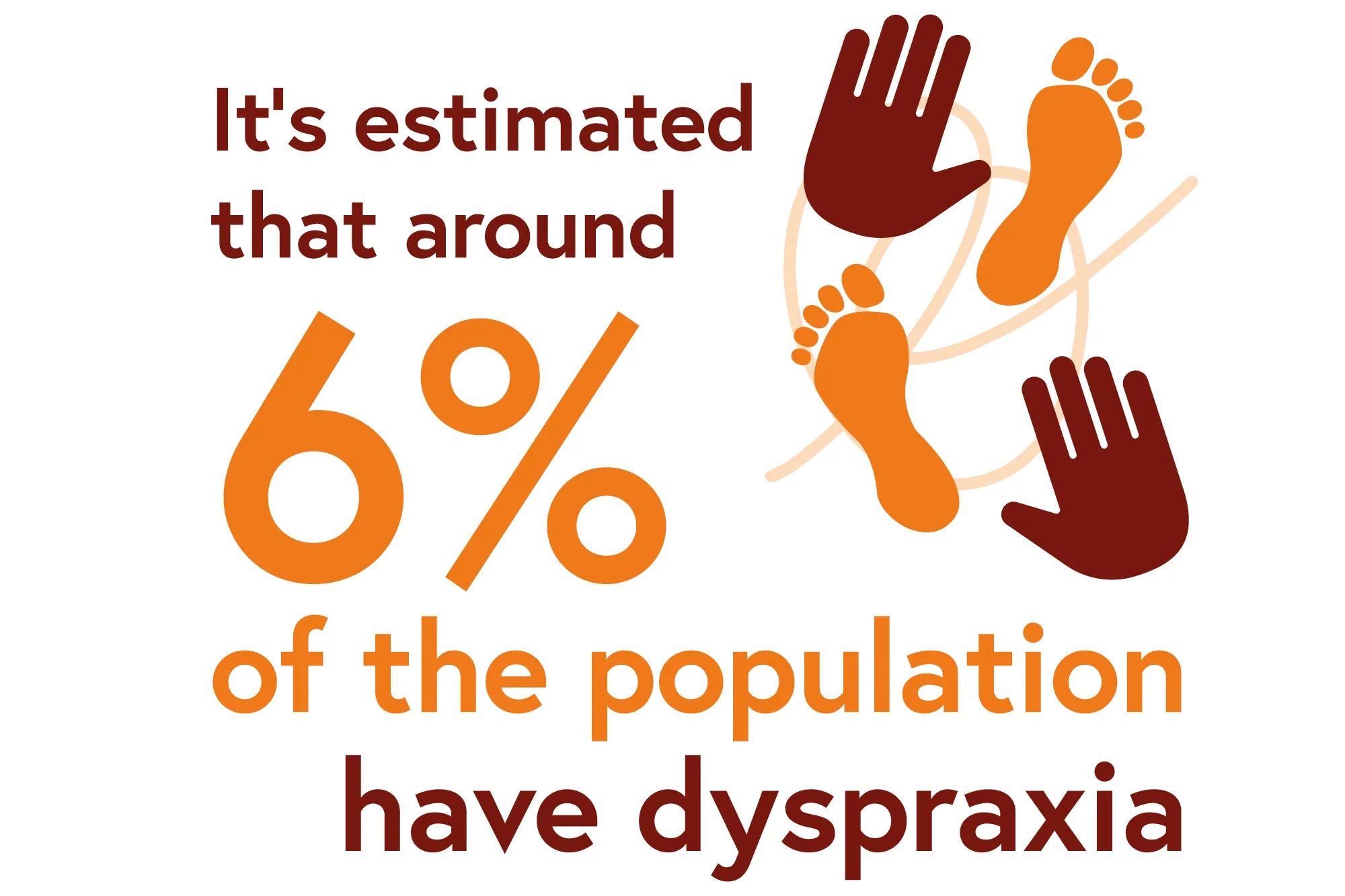Research is limited, but it’s estimated that around 6% of the population have dyspraxia, with men being four times more likely to be affected than women.
Based on existing research, it is understood that individuals with dyspraxia may exhibit one or more of the following traits:
- limited coordination – the key trait associated with dyspraxia is difficulty in coordinating body movements. This means that movements can require considerably more effort to complete. Traits may include poor balance, regularly tripping or bumping into things, moving awkwardly and finding it hard to learn new motor skills and transfer them to different tasks
- difficulties interacting with objects – related to limited coordination skills, it may be harder to interact with objects, like tools and equipment
- struggles with organisation – the struggles may be physical or mental. For example, they may regularly lose or forget items or information, or find it hard to organise their thoughts
- time-management difficulties – it may be harder for an individual with dyspraxia to remember appointments or meet deadlines and they may more frequently arrive late
- difficulties with speech – speech can be impacted. For example, they may speak slowly or leave long pauses before responding. This can be due to difficulties making the movements within the mouth required to generate words and sounds, or due to difficulties in organising thoughts and expressing them verbally.
Dyspraxia has been closely linked to other neurodivergent conditions. Research has suggested that around 52% of children with dyslexia also have traits of dyspraxia, and the same is true for around 50% of children with ADHD.27
All individuals with dyspraxia will exhibit traits related to their neurodiversity, so will require support tailored to their specific needs.
Following, we provide some examples of adjustments that have been implemented to support individuals with dyspraxia in the workplace.

Supportive ideas for employers and line managers
- Make instructions available – if the individual’s role requires interaction with tools and equipment, make sure user guides or instructions for these are easily accessible. Support the individual in practising the movements required to use the equipment so that they become more familiar with these motor skills.
- Support organisation skills – work with them to find methods of organisation that suit them, like implementing timetables, calendar reminders, filing systems and note-taking. Consider providing a dedicated space where they can store items at work.
- Optimise the workspace – help them to optimise their working environment and reduce risk. For example, if they are positioned at a desk, they may benefit from an ergonomic keyboard; or if they work in a practical field with large amounts of equipment, help them to reduce obstacles or items that could cause them to trip or injure themselves. This will benefit everyone.
- Educate, educate, educate – some colleagues may not know or understand how dyspraxia can affect someone. Raising awareness of this condition within your organisation can help colleagues to recognise the signs and be more patient and compassionate with colleagues who are affected. Dyspraxia Awareness Week, which takes place during the first week of October, offers a great opportunity to do this.
Supportive ideas for individuals with dyspraxia
- Practise your motor skills – taking in part in activities like dancing, cooking, gardening, computer games or swimming can help develop your motor skills and improve your strength and balance.
- Explore therapies – occupational therapy can improve your coordination and help you identify ways to manage everyday tasks that require fine motor skills. Talking therapies such as cognitive behavioural therapy (CBT) can help challenge negative ways of thinking and increase your confidence and assertiveness.
- Consider joining a neurodiversity network – a network can be a great place to share your own experiences, concerns or questions, learn from others about theirs and grow your self-confidence. Some organisations have an internal neurodiversity network, but if yours doesn’t, explore options within the wider industry. The IET offers a neurodiversity network for members, and there are various online forums you can join, such as Dyspraxic Adults. You’re not alone.
- Investigate organisational aids – there are several programs or apps that support organisation, some of which are designed specifically by and for neurodivergent individuals, like Tiimo and Thruday. Make use of reminder features on your phone or computer, or use physical reminder methods like Post-it notes, diaries or planners.
- Be kind to yourself – remember that although you may need more time to complete certain tasks or projects, you are not less capable of completing them than your peers. Be patient with yourself and remind yourself of the unique strengths that your neurotype can bring to a workplace, such as creativity, problem-solving skills and resilience.
References
26 Dyspraxia in adults - NHS (www.nhs.uk) (NHS, 2020)
27 https://www.learningdisabilities.org.uk/learning-disabilities/a-to-z/d/dyspraxia (Foundation for People with Learning Disabilities, ‘Dyspraxia’, 2024)
We’re upgrading our systems, and this includes changes to our customer and member account log in, MyIET. It’s part of our big picture plan to deliver a great experience for you and our wider engineering community.
Whilst most of our websites remain available for browsing, it will not be possible to log in to purchase products or access services from Thursday, 17 April to Wednesday, 30 April 2025. Our Member Relations team is here to help and for many of our services, including processing payments or orders, we’ll be able to support you over the phone on +44 (0)1438 765678 or email via membership@theiet.org.
We apologise for any inconvenience this may cause and thank you for your understanding.
For further information related to specific products and services, please visit our FAQs webpage.
